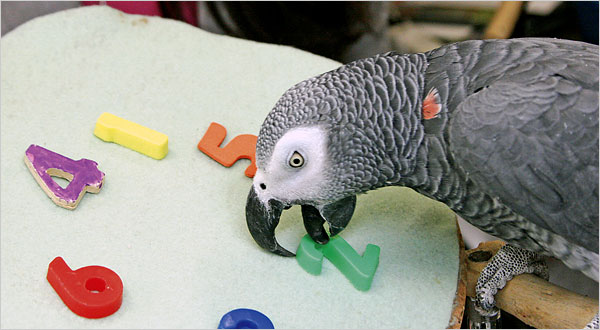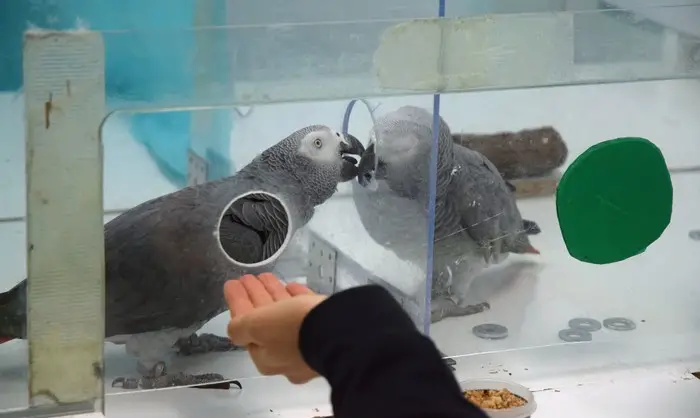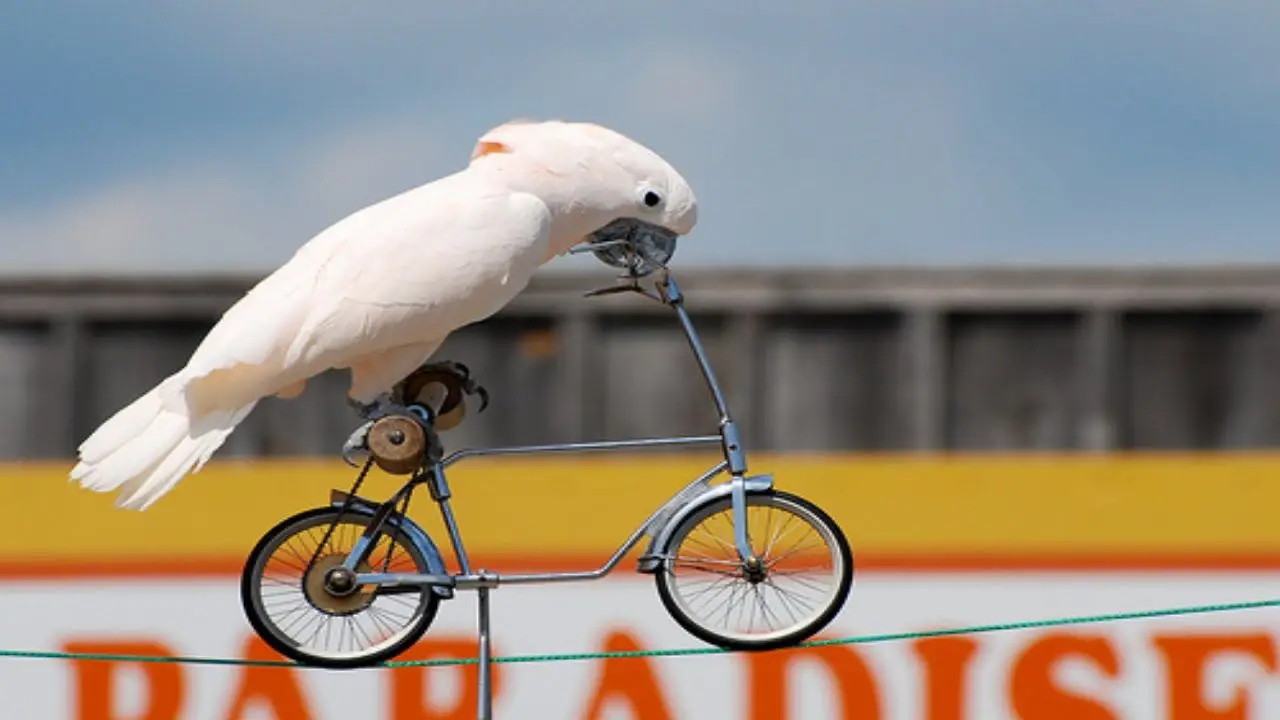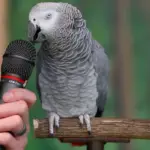
Parrots training, Everyone can educate their parrot or any other bird. In this area, some are more efficient and are among those for whom the laws of education are intuitive; they have this gift within them.
For others, it is necessary to acquire these methods and these laws by reading, traveling, meeting and many hours spent with the animal.
It was during my first trip to the United States that I discovered the positive reinforcement method; this method was a revelation for me, by its ethics, its simplicity of application, and its effectiveness. And I’m happy to share it with you and give you the KEY to successfully educate your bird.
Parrot Training Tools
parrot training stand
parrot training perch
parrot training toys
parrot training book
clicker for parrot training
parrot clicker training kit
parrot training gloves
parrot training stick
parrot harness training
How to training parrot
SOURCE:Harvard University
Parrot Behavior
The animals do not speak, they do not know how to verbalize their reactions, their expectations, their feelings.
Their bodies are therefore their only means of communication, whether or not accompanied by different cries or songs. If we want to understand them, it is therefore essential for us to be able to read and understand their messages.
It is important to differentiate a behavior of well-being (a feathered leg, stretching, closed eyelids, singing, etc.) or discomfort (distrust, open beak, screeching, frozen posture, nervousness…).
How to parrot talk training
SOURCE:MARLENE MC’COHEN
Parrot Adoption Near Me
The law of reinforcement is based on the science of behavior (or ethology). This theory is concerned with the action that results from learning while taking into account the consequences of the latter making it more or less likely to reproduce this behavior.
The reproduction of a behavior can be influenced by a reinforcement:
Positive, we bring a stimulus causing the animal to react positively, so it’s a “reward”.
Negative, the animal equates this to a “punishment”.
The concept of reward/punishment is intimately linked to our own emotional associations and interpretations, all from our own experiences.
A reward or punishment can be different for everyone. For example, the rain is positive reinforcement for the duck but negative for the cat; food can prove to be a negative reinforcement if you are not hungry …
To reinforce a behavior, you must use reinforcers (obviously positive to induce positive behavior). The booster will be what your bird likes or desires; it may be caresses, a particular seed, a scum on a specific area, a fresh fruit, bran …
By using positive reinforcement, the probability of frequency of occurrence of the desired behavior tends to increase. This is what the positive reinforcement method is based on.
Once you have acquired this, you can apply this principle of law to any situation you wish.

parrots training
Parrot Training Treats
By applying the positive reinforcement method, you use natural behavior wisely and develop it; once your bird has understood where its interest lies, everything will go very quickly … you can believe me.
By positively strengthening your bird, you will get very good results quickly while having fun too!
How to train your parrot
SOURCE:Howcast
Food: a particular seed, a dry or fresh fruit …
Voices: use a clear, positive voice full of convictions
Physical: a caress, a scratch on a specific area (the neck is generally very appreciated)
Sound: the sound of the clicker (see below), a snap of the fingers, applause…
Gray Parrot training

African parrot grey Games or toys
It is possible to combine several boosters in order to increase their impact, or to use jackpots (large quantities); however, they should be used sparingly and wisely to make sense of them.
A clicker is a tool that emits a dry, audible noise with each press. It is useful for marking the desired action at the right time, and therefore allows the bird to better target what is asked of it. The clicker must be accompanied by a reinforcer.
Let’s take an example: you want your bird to make a U-turn in the middle of its flight. Obviously, you will reinforce this behavior once it comes back to you with a food reward or something.
But if you click at the exact time of the U-turn, for example using “good work!” “Convincing, the bird will understand the job much better.
The clicker is more and more widespread in canine or equine education techniques. You can easily find them on the internet or in pet stores.
Some lines of work applying the positive reinforcement method that you can carry out at home:
Cut the claws of your bird without catching it
Parrot education pet The bird can stay in its aviary, ask it to come to grab the bars. Show him the reward, let him take advantage of it so as not to frustrate him. Get him used to touching his claws with the nail clipper without exerting strong pressure.
Reward it verbally and with the chosen treatment. After repeating these steps a few times, and when you feel the confident bird you can press harder to cut a few millimeters from the nail.
Teach Your Bird Biting is Not OK
SOURCE:wingsNpaws
Parrot training classes near me
Many of us know how unpleasant it is to collect our bird’s droppings during its free time.
The method is simple, you must use a gesture or a keyword giving the execution order to your bird, for example: “poop!” In a firm and convincing tone. Get him used to match his attitude (fienter) and your keyword (“poop!”).
The behavior of your bird reflects an imminent dropping (swelling of the feathers, a retreat of a few steps, fear ….). The frequency is also relatively regular. You must anticipate these first signs and bring the bird to the chosen location, then give it the keyword and give it its reinforcer.
At first, you will need to apply these steps very regularly, and even if your request does not achieve the desired result (droppings) give it a small reward, this will only strengthen your work.
Owners of EAM parrots or tame parrots are often eager to educate their birds and seek information from their veterinarian to know how to do it.
The first thing to consider is that parrots are extremely intelligent with their own character and can not be considered “dogs with feathers”.
Indeed, Psittacids are usually very stubborn and will not force themselves to do something if they do not want to. In addition, they often show neophobia towards everything they do not know and once they have associated an object or situation with a bad experience, it is very difficult to change their minds.
Thus, it takes a lot of patience and caution to learn something from a parrot but the reward is often worth the wait, such work to weave a unique bond between the owner and his bird.
Before starting to work with your parrot, you must first determine what are your favorite rewards: some birds seek contact with their owner, others prefer treats (raisins, sunflower seeds, nuts …) and others still react better to congratulations to the voice (HEIDENREICH 2014).
Starting with simple exercises (come on the hand, stay on his perch …) the owner will gradually accustom his parrot to assimilate what is a reward and what is not.
As time goes by, the parrot will understand the principle of positive reinforcement. Once this principle is put in place, the only limit to the bird’s ability to learn remains the imagination of its owner.
How to training parrot
SOURCE:Live Laugh Birds
Parrot Training Courses

parrots training
Get your bird used to drop where you want it
Parrot education pet With a parrot receptive to learning, the owner must base his education according to the 5 key principles listed below :
- Two-way communication: the owner quickly learns to understand his bird, his intentions, and his motivations. Thus, it is up to him not to rush his animal trying to force him to work if he does not want to. Similarly, by clearly stating what he expects from the bird (voice commands, gestures, posture, etc …) and by encouraging him, the owner will stimulate his parrot who will be more inclined to participate in the exercise.
- Honesty: You must never promise the bird a reward without giving it to him, this may frustrate him or even get him completely out of the exercise. For example, some coaches encourage their parrot to fly to them by showing them a peanut but giving them a pellet once the flight is done. The bird may then become frustrated to the point of no longer agreeing to do the exercises since it will expect not to receive the promised reward.
- Calm: for the bird to get the most out of the training, you have to give them a frame in which they can concentrate and not feel stressed. So, start by placing yourself in a room known to the bird (the one where his cage is usually), quiet and without distraction.
- Motivation: at each exercise, the owner must propose a motivation proportional to the effort he asks the bird (vocal encouragement for simple or acquired exercises or very palatable food reward for more difficult exercises).
- Promote positive reinforcement: in parrots, punishment is much less effective than reward. Thus, the positive punishment (appearance of an aversive stimulus as a blow) is counterproductive since it affects the trainer-parrot relationship and it will often lead to an aggressive response from the bird (bite, attack in flight, etc …). Negative punishment (disappearance of an appetitive stimulus) can sometimes help the owner to inhibit the displaced behavior of the bird (for example, to ignore the bird when it begins to cry not to assimilate that shouting him allows to attract the attention of his master) but will be effective only if the trainer puts in place a strategy to limit the appearance even of such behavior (enrichment of the medium sufficient so that the bird does not get bored not and do not start screaming).
- By applying all these principles, the owner will be able to calmly approach the training of his parrot which will allow him to establish a very strong relationship with his bird. Nevertheless, he must never forget that the parrot is stubborn and that the only appropriate answers to this stubbornness are patience and ingenuity: in Psittacidae, “we get what we strengthen (MARTIN 2007).




















